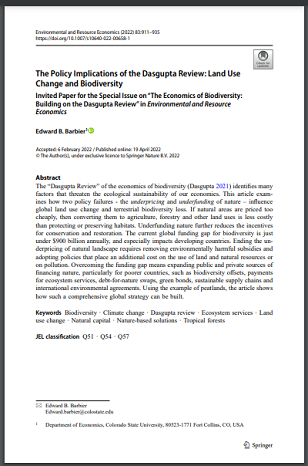
The “Dasgupta Review” of the economics of biodiversity (Dasgupta 2021) identifies many factors that threaten the ecological sustainability of our economies. This article examines how two policy failures - the underpricing and underfunding of nature – influence global land use change and terrestrial biodiversity loss. If natural areas are priced too cheaply, then converting them to agriculture, forestry and other land uses is less costly than protecting or preserving habitats. Underfunding nature further reduces the incentives for conservation and restoration. The current global funding gap for biodiversity is just under $900 billion annually, and especially impacts developing countries. Ending the underpricing of natural landscape requires removing environmentally harmful subsidies and adopting policies that place an additional cost on the use of land and natural resources or on pollution. Overcoming the funding gap means expanding public and private sources of financing nature, particularly for poorer countries, such as biodiversity offsets, payments for ecosystem services, debt-for-nature swaps, green bonds, sustainable supply chains and international environmental agreements. Using the example of peatlands, the article shows how such a comprehensive global strategy can be built.












